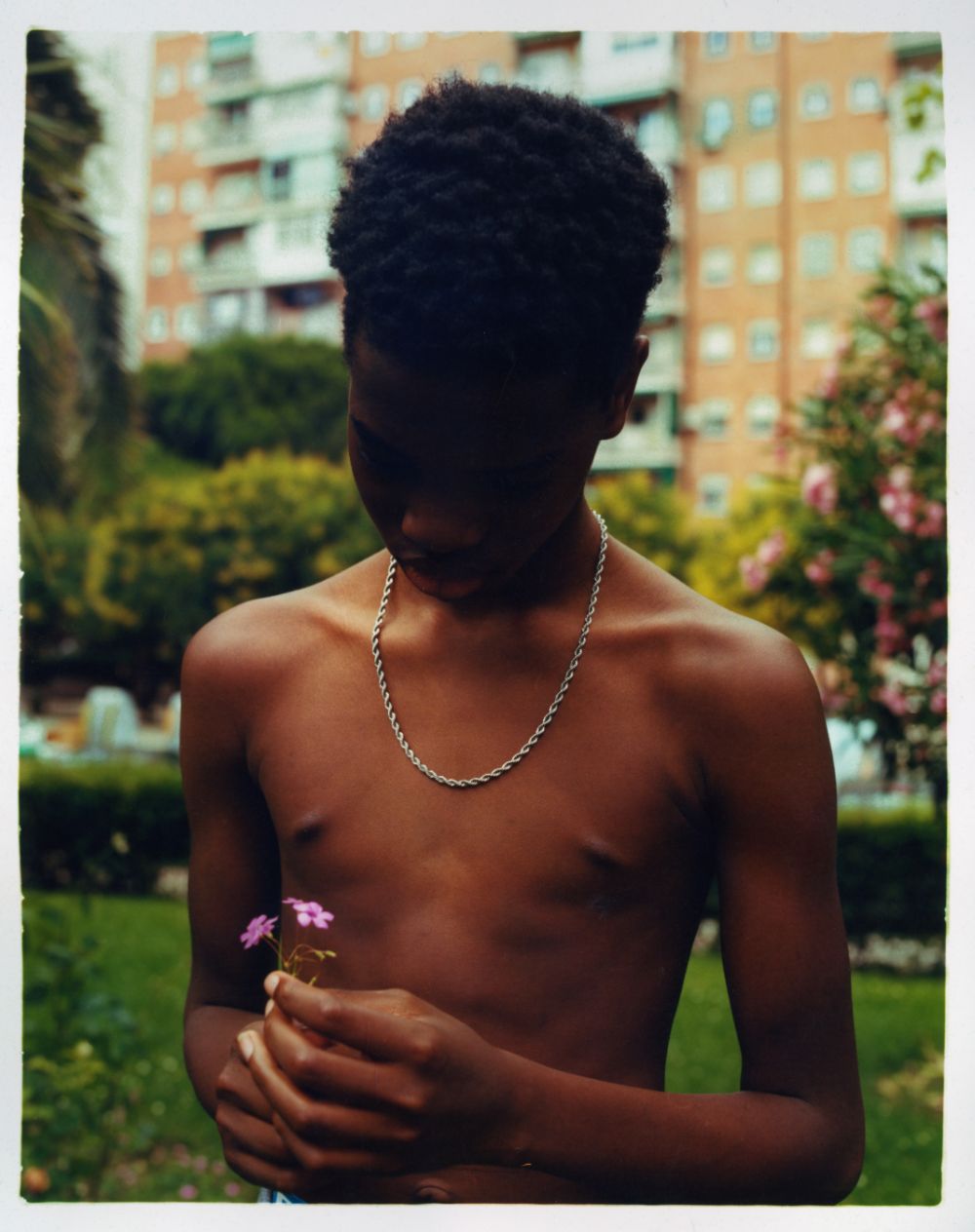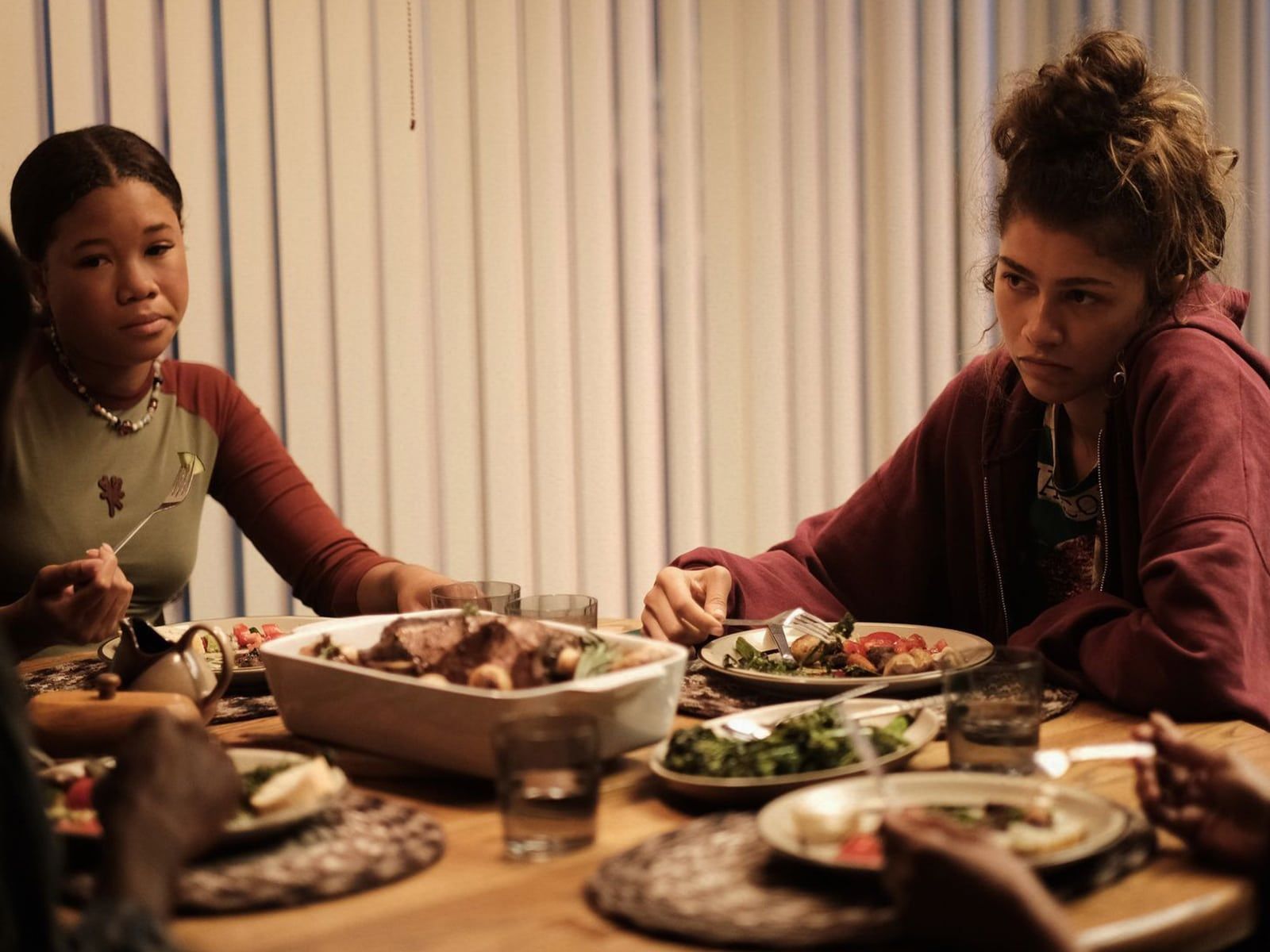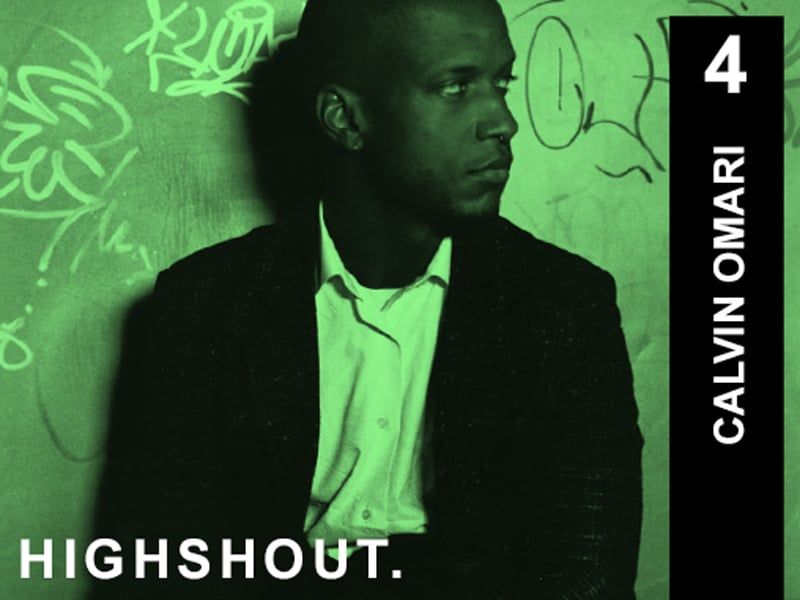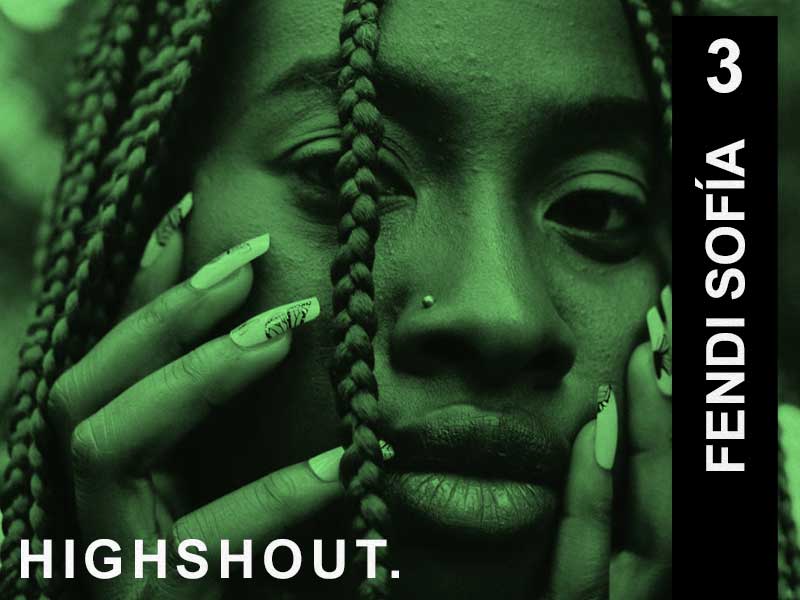“To acknowledge someone.” This is how Urban Dictionary defines the term ‘shout out’. “To make ones presence known.” Faced with a shameful standard of almost exclusively white presence in all media – yes, also in this one – at Highxtar we have decided to create an alternative space to ensure a counterpart to the hegemonic narrative, to lend voice to the silences. Where are the racialized creative figures? What is their place in fashion, in art, in design, in photography, in literature?
HIGHSHOUT. is a new section that aims to serve as a window and loudspeaker for racialized artists and creatives, but also for those whose experiences or work are closely related to racism and the lack of visibility of these groups. “We are very open to anyone who feels identified with this new section.” We give the game board to photographer Sergio Pontier (@sergio____p) and the stylist Jose aka Gooseed (@gooseed) so that they are the ones who decide the how to play. Both will be at the helm of this monthly space that will host interviews, exclusive content, art, social and political struggle. We talked w/ them.

Highxtar (H) –First, a brief introduction, who are you and what do you do for a living?
Sergio (S) – I’m Sergio, I’m 17 years old, I live in Madrid and I’m dedicated to photography, besides studying the second year of high school. My photography does not specialize in anything in particular, there are areas that interest me more than others, such as fashion or documentary, but I usually focus on portraits or landscapes; I like to portray people just as they are, naturally.
Landscape (together with documentary photography) is something that attracts me a lot, especially for colors and compositions, since many times I can be attracted either by a house or by the sky. It seems curious that we can find something beautiful in simple or not very difficult to find things. As for the documentary, it’s a bit the same, I really like to photograph things so that they can be seen as they are, always looking for a beauty that goes beyond the simplicity of the things I photograph.
Jose (J) – I’m Gooseed. I’m 27 years old and I live between Madrid and Toledo. After spending a few years studying tourism and graphic design, I decided to focus on the fashion industry specializing in styling.
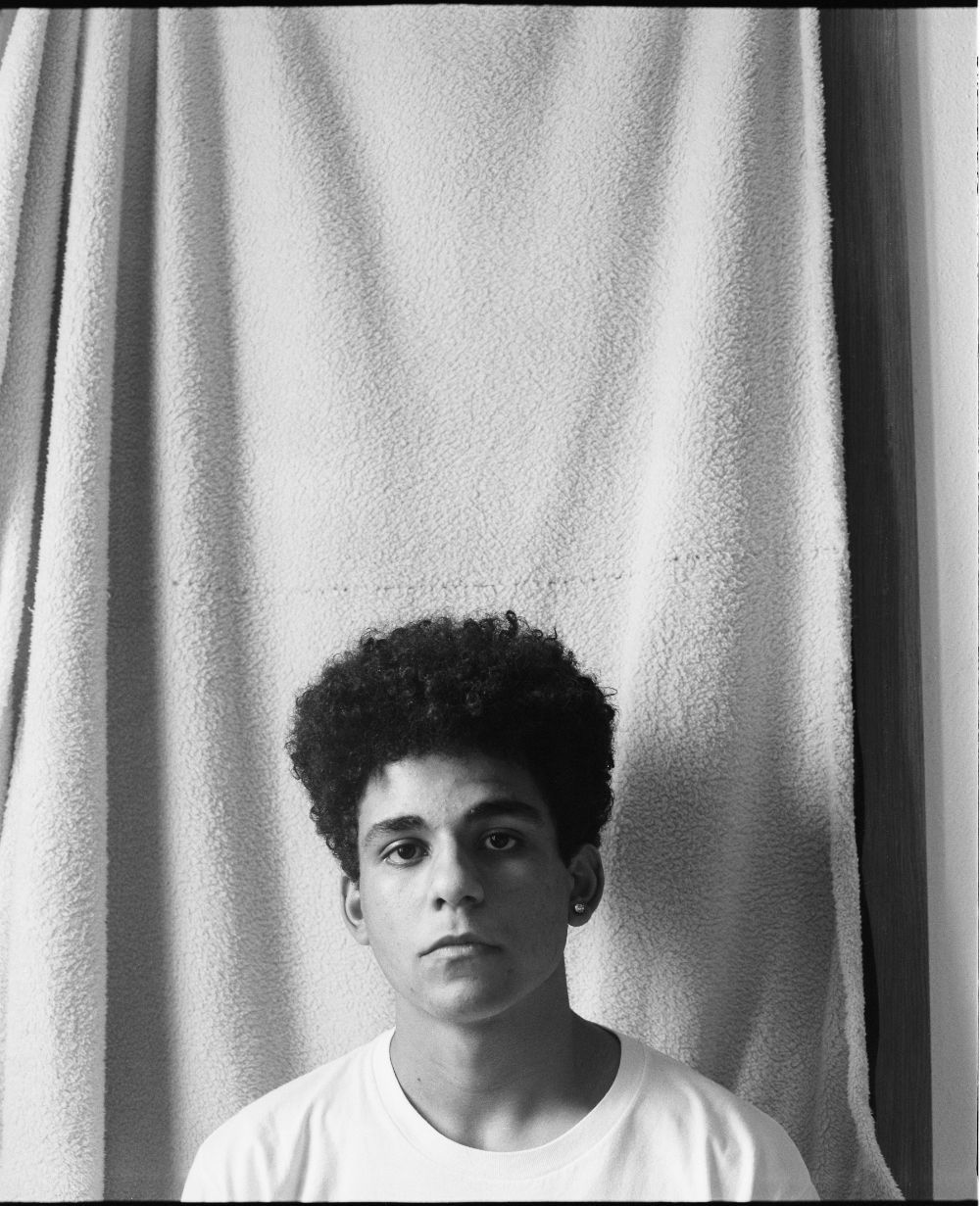
H – From now on you will run HIGHSHOUT: a new section that aims to give a voice to racialized figures in fashion, art and other industries. How will you choose the participants? What criteria must they meet?
J – I think first and foremost, you could say that they are people with obvious talent and of course the fact that being racialized has led them to feel displaced or unrepresented within a “mainstream” scene. From there, we are very open to anyone who feels identified with this new section.
S – I think the idea of this project is not to focus on a specific criterion of artist, but on a prototype of person who, understandably, does something different – which is already common among us, as I think racialized people tend towards an art that goes beyond the general trend, either because of our experiences or culture – something that really goes out of the conventional and goes beyond the basics, that deserves to be shown because it stands out, because it is innovative and interesting, outside the fact that this person is racialized. And as Jose says, we are open to see what anyone who can feel part of it has to teach.

H – The fact that a media, as we are now trying to do at Highxtar, decides to give a voice to these racialized people who have felt displaced seems to be a symptom that society is changing. In recent years it seems that society is becoming more aware and awake. But how much truth is there in this?
S – Well, I think we must differentiate the fact that people are more awake from the fact that the issue is hotter. We have recently witnessed horrible events in terms of this issue, and these have led everyone to reflect that this is something that has to change yes or yes, joining the work of change and helping. However, there is a large number of people who notably do not believe in all this, believing that it is something from the past and that everything that exists now is a “US movie” and being unable to recognize and open themselves to understand that there are certain behaviors, attitudes or ways of being or seeing this issue that need to be changed a lot. In short, I think people are aware of the issue, but are not fully awake, as many seem unable to educate themselves to change things on their own and are only able to do so if there is someone who is directly affected by it (someone racialized) and who gives them a wake-up call.
I especially want to highlight cases where unless you have a racialized friend who teaches you that’s wrong to do or to say certain things, there is no means by which people can educate themselves and/or learn that those things are wrong. And to say that, despite the fact that we find many such cases, we also find the wonder that there are open people, as in your case or in the case of others who do bet on progress.
We must differentiate the fact that people are more awake from the fact that the issue is hotter.
J – I see it as a long-distance race where there are more and more people rowing in favor. But this does not mean that this has solved or diluted the problem, far from it. The creation of this section is an example. It is not necessary to demand a space where at the end of the day what it is about is recognizing people who perhaps otherwise would not be, but for that very reason it is something to be grateful for. That is how I see it at the moment.
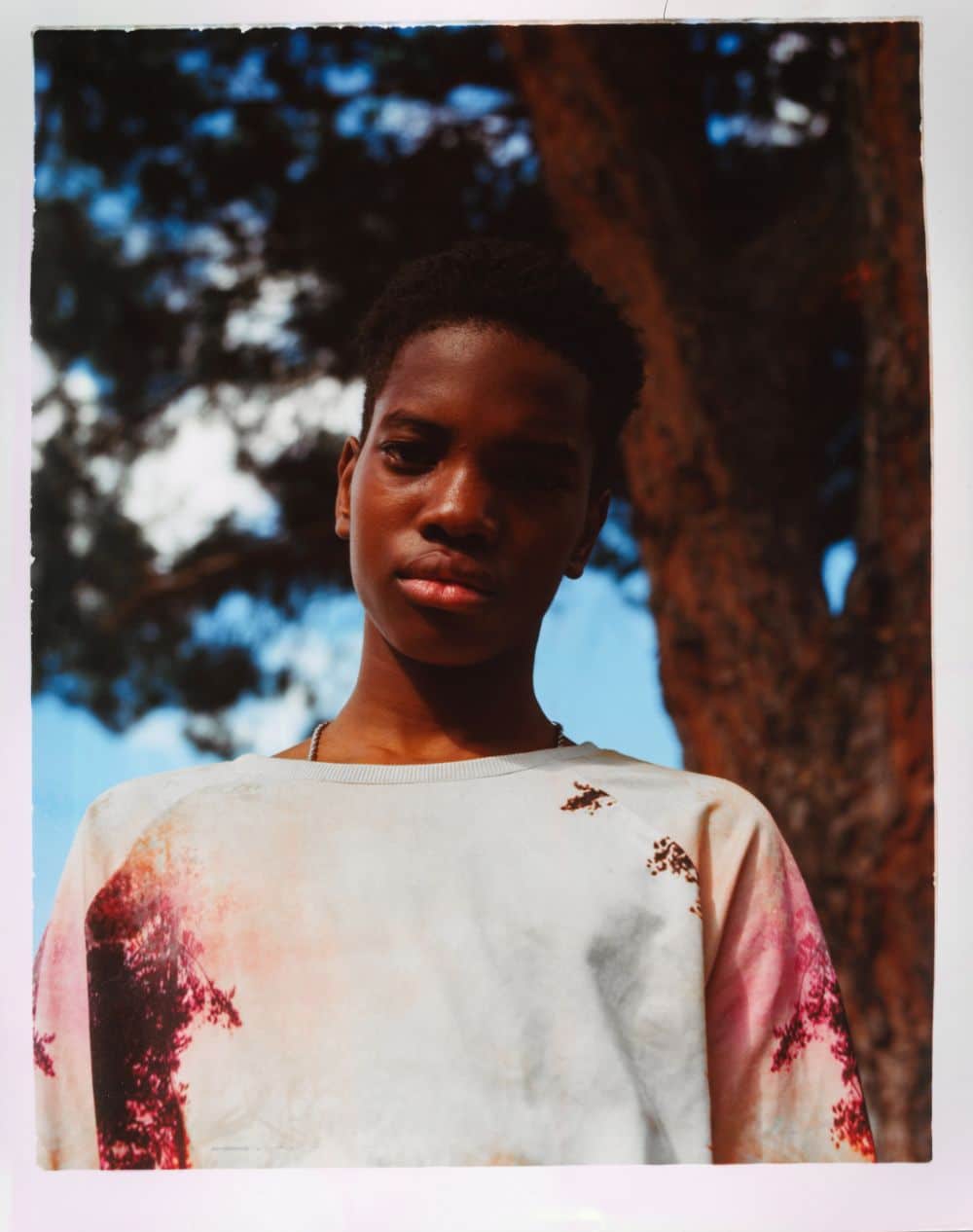
H – What Sergio says about knowing how to differentiate between people being awake and the subject being hot, I have seen it lately in many examples. I don’t know if you remember one of the last Jacquemus fashion shows, where there was a lot of black models, but we find out later that absolutely all the creative team was white. Cases like this show that anti-racism can be a mask to expose oneself to the public when it’s interesting: people who are not awake and take advantage of the fact that the issue is hot.
S – Exactly!
H – Have you had similar experiences of your own, or do you remember any similar examples??
S – I can’t tell in first person about cases that I have experienced like Jacquemus’, but I do can tell in first person about experiences with people who are closer. Since I move in a somewhat mixed environment, having grown up a bit in between, I have always had my group of white people and my group in which there is more of a mix or almost all of us are black or Afro-descendants. In my group of white people I have been the one who has had to teach my friends (or many of them) to respect and eliminate many aspects of their speech or way of addressing you, and many times it is not easy, because the lack of understanding of people does not help – but fortunately my friends have been understanding.
J – I grew up in a 100% white environment and that somehow marks you. In my case, during my adolescence I didn’t know how to find clear references beyond rap or basketball and that makes you think you are in an oasis when it’s really not like that.
You are questioned for being black in some situations, but also for “not being black enough” or even for acting “like a white guy” and it makes you look like you fall in no man’s land. All of this made me question my identity quite a few times. You don’t accept yourself as you are because you fall into the mistake of believing too much in the opinion of others and end up not accepting yourself, as you are judged in a superficial way all the time both physically and mentally.
I can’t give you a concrete example, but it is true that the constant stops made by the police (some even when they are off duty), that at school you are treated as deficient because you are not motivated or in the day to day when you are on your way to work or go home at dawn and people grab your bag, hug your girlfriend tightly or not being able to be promoted at work because “it doesn’t look good” are some of the things I have experienced.
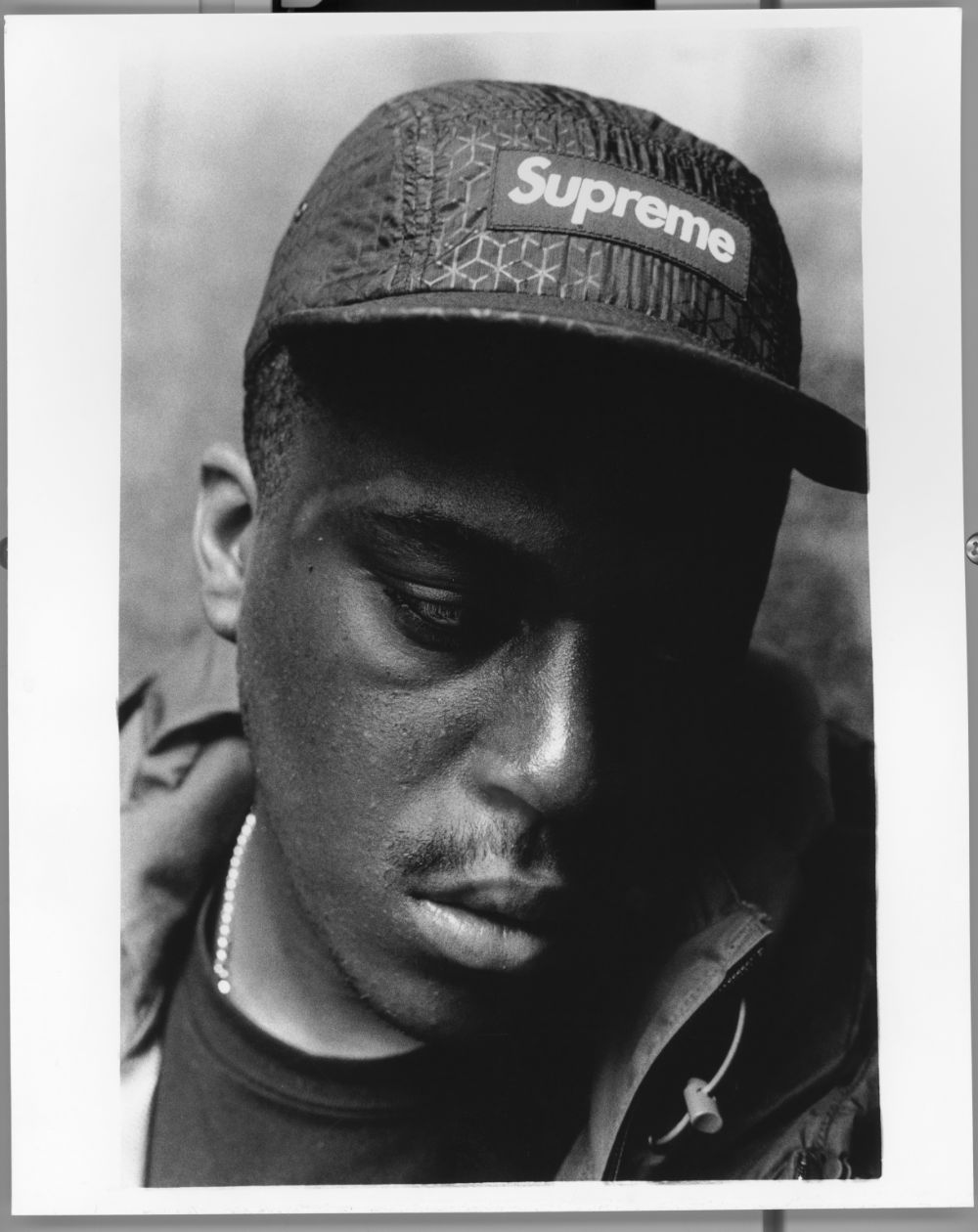
You are questioned for being black in some situations, but also for “not being black enough” or even for acting “like a white guy”.
S – I couldn’t agree more with Jose, I think we both have had the same experience (us and all the people like us who grew up here). I, personally, have found myself at times in a crisis of identity and not knowing what or who I am, since both poles give you opposite opinions – ending both in a: “you don’t belong to our people, but neither to their people”.
H – And about this awareness that you tell me you had to explain to white people, what did you think about the reception that the BLM movement had? Do you believe in general that massive involvement of brands, companies, white people in general?
S – No, certainly not, or at least not in the vast majority. However, it is clear that there are cases and cases. It seems to me that it is very easy for everyone to “get in”, especially when you are not the one who is affected. It’s very easy to say x thing and talk about x thing, and by that is not to say that anyone who has been made aware thanks to the BLM (which is already a good thing) seems to me to have no say or vote. However, it is very easy to contrast who is really on the ball and who is inconsistent, shallow or even self-serving with the issue.
By that I don’t mean in many cases, people are interested for social acceptance and so on, but nevertheless the case of the NBA is a clear example, since although many people don’t know it, they put on bibs with reinvindicative names on the subject. However, this type of jerseys with these bibs were not sold, that is a clear example of the lack of interest in the cause, in addition to the fact that the involvement of the association continues at the same intensity to this day.
H – Wow, I didn’t know about the NBA bibs.
S – The dorsal issue happened when they opened the bubble for the Playoffs last season, almost right after the George Floyd or Breonna Taylor issue. I noticed just because of that very issue, I said, “will these jerseys be selling with those numbers on them?” The NBA even respected the fact that players took a knee at the playing of the anthem even though Trump disagreed.
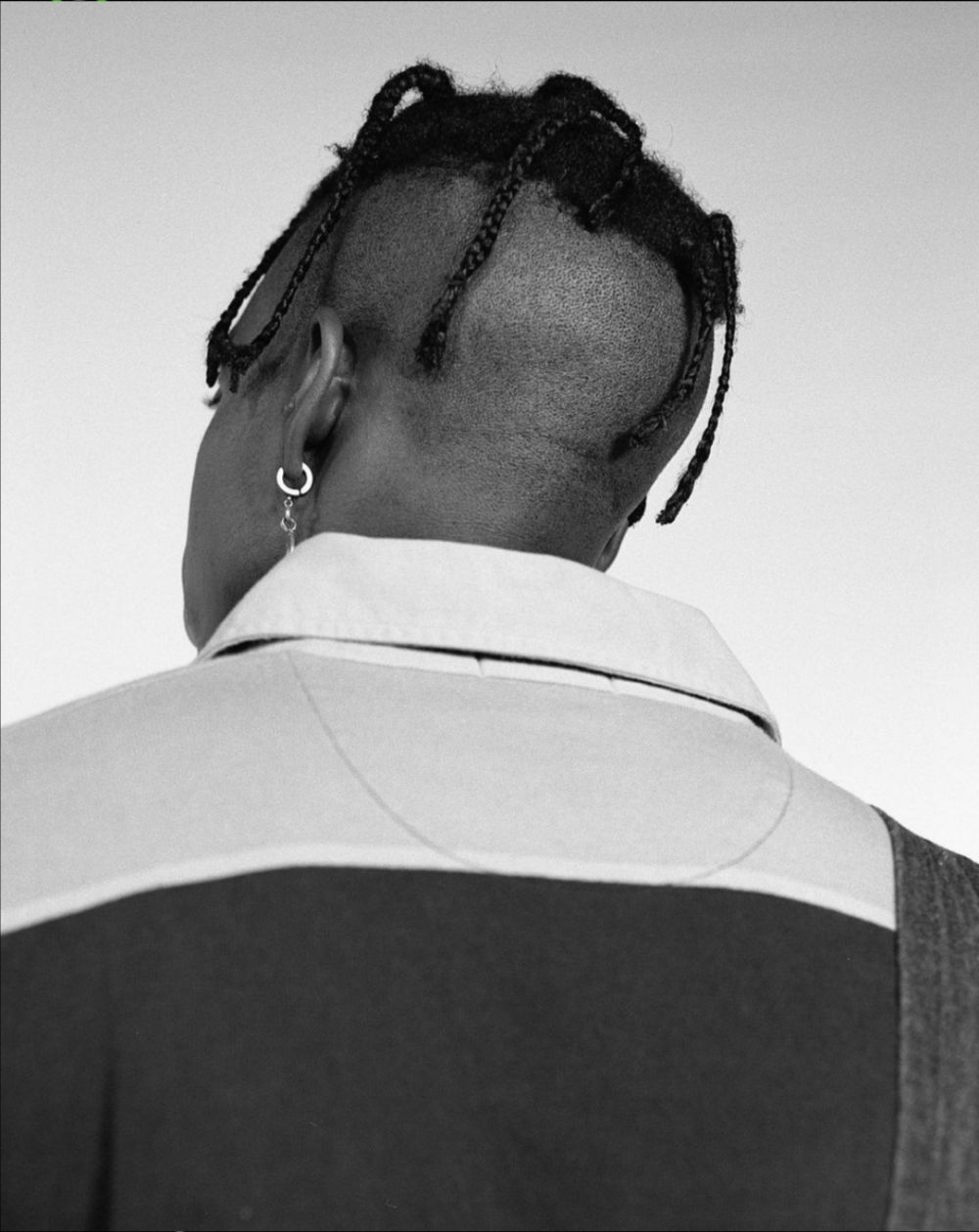
I have been in an identity crisis for not knowing what or who I am, since both poles give you opposite opinions – ending both in a: “you don’t belong to our people, but neither to their people”.
H – Let’s go with the last two questions. What level of real black presence do you think there is in Spain in fashion, art, music, etc?
S – There really is a lot, what happens is that in many cases it is concentrated, a clear example is Madrid Sur. I’ve known people from there for some years and when I started I could not have imagined that there would be so many people like me or similar, since I live in the center, and the presence of these people in this area is conspicuous by its absence. As for art I think it’s a little bit the same situation, I think that in many cases, as I said before, our art tends to have a certain look that denotes where we come from.
And maybe this is the reason why our art is not so well represented, because society wants or expects an art that fits its canon, which may not be one that fits our way of expressing ourselves artistically. I at least don’t expect people to understand the deep origins, but to learn to “digest” or enjoy it in the same way they do with other types of art.
J – There is, and it is growing. The fact that everything coming from African culture is at the forefront of the mainstream, makes everything more fluid. Even so, there is still a long way to go to make people like us visible in the cultural scene. For example, I know that there are several independent racialized artists that in the eyes of Spanish contemporary art are nonexistent, I know that in Fuenlabrada there is a very powerful music scene that may be known, but it is not recognized at all. I know that urban music is lucky enough to come from the hand of more and more racialized people (and with an increasing female presence every year). I know that there are more and more female and male designers, stylists and photographers.
However, I don’t think any of them are part of the media in a clear way if it’s not in front of the camera. And for me this causes a major disconnect between the dissemination and operation of these media in terms of the content they publish. Because by losing sight of an important segment of the current scene you are somehow biasing your content and therefore offering a vision that was probably valid 5 years ago, but is no longer valid. That’s why alternatives like this are so important.
H – And to close… What real actions can we, the media and brands, take to change the situation?
S – I think that many people, like you, try their best to help progress, but if I had the means in my hand, what I would do would be to ask them to normalize us, to normalize our art, our person and our being, so that we are not something that when you see it you are surprised and say “oh, look! How curious, a black man here, how interesting!”; being clearly something unusual for the person who sees it. I would ask that we be normalized as people who can achieve anything, that we not only be seen in movies as slaves, or poor, or be referred to with words such as immigrants rather than being referred to as men. I would ask that, beyond the visibility we are given, we are normalized.
J – If talent is sought within the communities and integrated within these organizations and companies there can be a real change. If this does not happen, a great opportunity would be missed and we would go back to the same old thing, only with a different wrapper, and so the normalization we are talking about would not advance at the pace it could.
Sigue toda la información de HIGHXTAR desde Facebook, Twitter o Instagram
